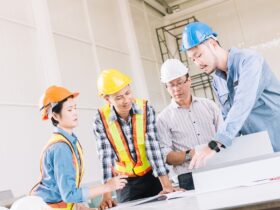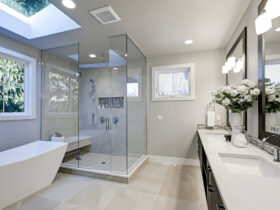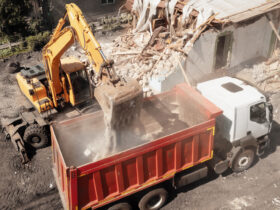Building maintenance is an essential aspect of property management and facility management. It involves the upkeep and repair of building systems and components to ensure the building remains in good condition, safe, and efficient. A well-maintained building not only enhances the occupants’ comfort and safety but also helps in preserving the property’s value. This ultimate guide to building maintenance will help you understand the importance of building maintenance, identify pain points, and overcome challenges to develop a comprehensive and cost-effective maintenance plan.
Understanding the Importance of Building Maintenance
Building maintenance plays a crucial role in several aspects of a building’s lifecycle, including:
- Safety: Regular maintenance helps identify and address potential safety hazards, such as electrical issues, structural damage, and fire risks, ensuring the building remains a safe environment for its occupants.
- Asset Management: A well-maintained building retains its value and attracts higher-quality tenants, leading to increased rental income and property value.
- Energy Efficiency: Proper maintenance of building systems, such as HVAC and lighting, can significantly improve energy efficiency, reducing energy costs and the building’s environmental impact.
- Occupant Satisfaction: A well-maintained building provides a comfortable and healthy environment for its occupants, leading to increased productivity and satisfaction.
- Compliance: Regular building maintenance helps ensure compliance with local building codes and regulations, avoiding potential fines and penalties.
Identifying Pain Points in Building Maintenance
Some common pain points in building maintenance include:
- Inadequate Budget: Insufficient funding for maintenance activities can lead to deferred maintenance, resulting in costly repairs and potential safety hazards.
- Lack of Expertise: Building maintenance requires specialized knowledge and skills. In-house staff may lack the necessary expertise, leading to subpar maintenance practices.
- Reactive Maintenance: Many organizations rely on reactive maintenance, addressing issues only when they become critical. This approach can lead to increased downtime, higher repair costs, and decreased asset life.
- Poor Communication: Ineffective communication between property owners, facility managers, and maintenance staff can result in confusion, delays, and suboptimal maintenance practices.
- Inefficient Maintenance Processes: Inefficient maintenance processes can lead to wasted time, resources, and increased costs.
Overcoming Challenges in Building Maintenance
To overcome these challenges, consider the following strategies:
- Develop a Maintenance Plan: A comprehensive maintenance plan helps allocate resources effectively, prioritize maintenance activities, and ensure all building systems receive the necessary attention.
- Invest in Preventive Maintenance: Shifting from reactive to preventive maintenance can help identify and address potential issues before they become critical, reducing downtime, repair costs, and extending asset life.
- Train and Educate Staff: Investing in training and education for maintenance staff can help ensure they have the necessary skills and knowledge to perform maintenance tasks effectively.
- Improve Communication: Establishing clear lines of communication between property owners, facility managers, and maintenance staff can help streamline maintenance processes and ensure everyone is on the same page.
- Leverage Technology: Implementing maintenance management software can help automate and streamline maintenance processes, improving efficiency and reducing costs.
Developing A Comprehensive Maintenance Plan
A comprehensive maintenance plan should include:
- Inventory of Building Systems and Components: Create a detailed inventory of all building systems and components, including their age, condition, and expected lifespan.
- Maintenance Schedule: Develop a maintenance schedule for each system and component, including preventive maintenance tasks and frequency.
- Budget Allocation: Allocate budget for maintenance activities, considering both preventive and reactive maintenance needs.
- Staffing and Training: Ensure maintenance staff have the necessary skills and knowledge to perform maintenance tasks effectively.
- Monitoring and Evaluation: Regularly monitor and evaluate the effectiveness of the maintenance plan, adjusting as needed to optimize performance and cost-efficiency.
The Role of Technology in Building Maintenance
Technology can play a significant role in improving building maintenance processes and outcomes, including:
- Maintenance Management Software: Maintenance management software can help automate and streamline maintenance processes, improving efficiency and reducing costs.
- Internet of Things (IoT) Devices: IoT devices can help monitor building systems and components in real-time, providing valuable data to inform maintenance decisions.
- Energy Management Systems: Energy management systems can help optimize energy consumption, reducing energy costs and improving building efficiency.
- Mobile Applications: Mobile applications can help improve communication between maintenance staff, property owners, and facility managers, ensuring everyone is on the same page and maintenance tasks are completed efficiently.
Tips for Cost-Effective Building Maintenance
- Prioritize Preventive Maintenance: Preventive maintenance can help reduce downtime, repair costs, and extend asset life, making it a cost-effective approach to building maintenance.
- Regularly Review and Update Maintenance Plan: Regularly reviewing and updating the maintenance plan can help ensure it remains effective and cost-efficient.
- Optimize Staffing and Training: Ensuring maintenance staff have the necessary skills and knowledge can help improve maintenance outcomes and reduce the need for costly third-party contractors.
- Leverage Technology: Implementing technology solutions, such as maintenance management software and IoT devices, can help streamline maintenance processes and reduce costs.
- Monitor and Evaluate Performance: Regularly monitoring and evaluating maintenance performance can help identify areas for improvement and potential cost savings.
Conclusion
Building maintenance is a critical aspect of property management and facility management, ensuring the building remains in good condition, safe, and efficient. By understanding the importance of building maintenance, identifying pain points, and implementing strategies to overcome challenges, organizations can develop a comprehensive and cost-effective maintenance plan. Leveraging technology and focusing on preventive maintenance can help optimize building maintenance processes, reducing costs and improving building performance.








Find Us on Socials